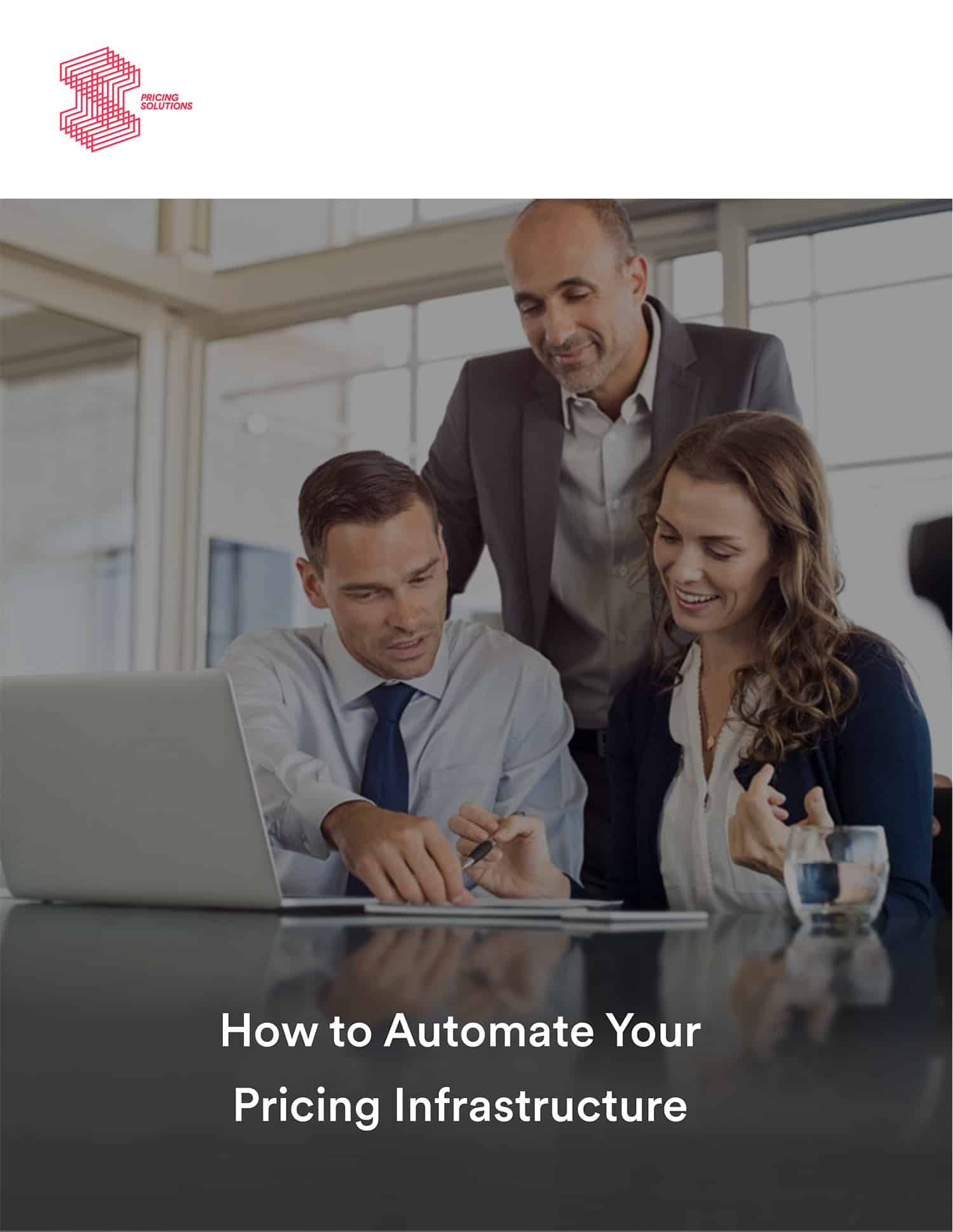How to Automate Your Pricing Infrastructure
Mastering Value-Based Pricing
What you’ll learn from this white paper:
Despite the evidence that shows pricing is the most critical predictor of profitability, the science of pricing is still relatively underdeveloped for most organizations, and nine out of ten businesses have the wrong pricing automation system in place.
The purpose of this 18-page white paper is to demonstrate how having the right pricing automation software can maximize business profitability in the long run.
What you’ll get from this white paper:
• How to establish the key elements of pricing automation process within your company
• How to move from reactive ad-hoc pricing to automated pricing software
• How to apply World Class Pricing Framework™ to implement an effective value-based pricing for measurable, long-term success.
Read The Excerpt
Is your pricing reactive and undisciplined? Do your customers and sales teams struggle to understand your pricing rules? Is it challenging to determine whether your pricing is effective, even though you have put tools and measurements in place to capture pricing-related data?
If so, you’re not alone.
In 1992, the article ‘Managing Price, Gaining Profit,’ appeared in the Harvard Business Review. The article put pricing front and center, arguing that “pricing is the most important driver of company profitability.” In fact, according to Paul Hunt and Jim Saunders, authors of World Class Pricing: The Journey, “this relationship has been shown many times in numerous publications and conference presentations.”
Despite the evidence that shows pricing is the most critical predictor of profitability, the science of pricing is still relatively underdeveloped for most businesses, and as such few have optimized their pricing to maximize profits.
But is pricing automation the answer?
The Foundation of Pricing Automation
First, let’s define pricing automation. With it, prices are determined automatically using a software system based on a pre-determined set of rules or constraints, as opposed to manually by a pricing manager. There is very little, if any, human intervention once the system is set up.
Most pricing automation systems use a simple process flow:
Pricing Automation Process
The more difficult element to pricing automation is defining the pricing strategy behind the automation. Using the right strategy in the form of pricing logic is critical, and to create it takes a mix of science and art.
When it comes to the software itself, there are generally two main types – glass box and black box. A glass box software is transparent, meaning that your company understands and can see how the pricing engine uses the data that’s been input to determine pricing.
In a black box system, the pricing strategies and algorithms that determine your pricing are often developed around the software vendors “pricing science,” and your company may not know, understand, or see the pricing automation process flow. Under the black box approach, algorithms are often proprietary to the software vendor and henceforth inaccessible to the user.
Graph 1: a Black Box vs. a Glass Box approach
The airline industry is an example of one that comfortably uses black box pricing automation, while those industries involved in manufacturing and distribution, as well as some B2B companies, tend to lean more towards a glass box approach.
One of the main reasons some companies prefer a glass box system is because their sales team needs to have understanding and trust around how their pricing is determined. For example, one of our clients is a four-billion-dollar global multinational B2B company whose sales team needs to know that similar customers are paying similar prices for similar products and services. They need to know that prices are value based and “fair.”
Ultimately, whether you choose a glass or black box pricing automation software will depend on your industry, your pricing philosophy, and your need for pricing transparency.
While important considerations, these factors don’t determine whether pricing automation is an appropriate solution for your company. Nor do they help you determine which pricing automation software is best for your company. You might be surprised to learn that nine out of ten businesses have the wrong pricing automation system in place. Why buy a Cadillac when you need a pick-up truck?


